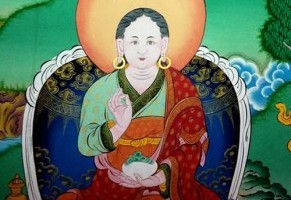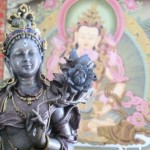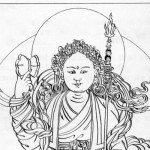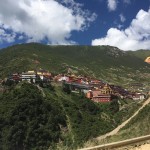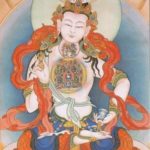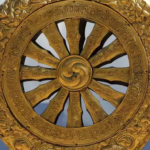Buddhist Women: Jetsuma Mingyur Paldron
One of my favorite Buddhist stories of Buddhist women is that of the eighteenth century leader, Jetsunma Mingyur Paldron (Tib. rJe btsun Mi ‘gyur dpal sgron, 1699– 1769).
This is the story of a female Buddhist teacher who, despite her family members being murdered, being forced into exile and dealing with debilitating health condition, becomes a major teacher and the pivotal figure in the revival and restoration of a major Tibetan monastery and its lineage.
Mingyur Paldron was the daughter of Terdak Lingpa who was a major figure in Tibet’s Nyingma lineage. Her story is unique in numerous ways. It is one of the few extensive biographies of female religious leaders from Tibet, it describes a female as the pivotal figure in sustaining a Tibetan lineage, it describes a female master of the great perfection teachings (dzogchen). As Melnick points out, Mingyur Paldron’s story is also unique because it depicts one of the few legends of female Buddhists who were supported and encouraged by their family to practice Buddhism. (1)
Mingyur Paldron was trained from a young age and took monastic vows when she was fifteen. One year later, her father passed away and she went into retreat.
In 1718, during a wave of violence against the Nyingma lineage, her father’s monastery, Mindrolling Monastery, (Tib. sMin grol gling) was destroyed by invading Dzungar Mongol forces. They had destroyed that monastery and many others in their campaign to consolidate authority over the Tibetan region. Many texts were destroyed and people murdered. Mingyur Paldron’s brother and uncle, who were the main lineage holders of the Mindrolling tradition, were taken and imprisoned in Lhasa and then executed. Hearing this news, she left retreat and fled into exile into Sikkhim, with Mongol forces in hot pursuit.
In addition to the hardships of being hunted, fleeing into exile and losing her family members, she also suffered under serious health problems. Mingyur Paldron suffered serious illness of a stomach tumor, which was eventually treated and healed with Tibetan medicine.
She gave many teachings in Sikkim until, in 1721, after the Mongols effort disintegrated and the Tibetan government was reformulating. Then, she returned by to Tibet, giving many teachings as she travelled homeward.
When she arrived at the former site of Mindrolling Monastery and led a reconstruction of the buildings, followed by retreats and practices to bring the site back to flourishing.
Despite the heroic nature of her leadership, her life was not without opposition. Due to her rising power and influence, she and her attendants are sent away a second time. This time it was under the excuse for her to work in the fields for a period of time. However, due to the effort of a patron and supporter she was returned. Under her leadership, Mindrolling monastery continued to develop and expand its influence throughout Tibet. She continued to work and teach in Tibet until her death in 1769.
Retroactively she was regarded as the first in a line of female reincarnated Lamas (tulkus). She had prophesied that her future births would be primarily female. Today, a lama that holds the Mindrolling lineage is Her Eminence Khandro Rinpoche.
Mingyur Paldron’s teachings included Mahamudra, Khandro Nyingthik, the treasure revelations of Terdak Lingpa, her own interpretations, visions and more. She was particularly known for her explanations of Ati Yoga (Dzogchen), the great perfection teachings.
Footnotes:
References:
Bhutia, Kalzang Dorjee, “The Importance of Jetsun Mingyur Paldron in the Development of Sikkhimese Buddhism,” Eminent Buddhist Women (Kindle Locations 3204-3205). State University of New York Press. Kindle Edition.
Melnick, Alison. “The Life and Times of Mingyur Peldron: Female Leadership in 18th Century Tibetan Buddhism.” 2014. Dissertation. University of Virginia.
Photo Credit:
http://treasuryoflives.org/biographies/view/Mingyur-Peldron/9394

